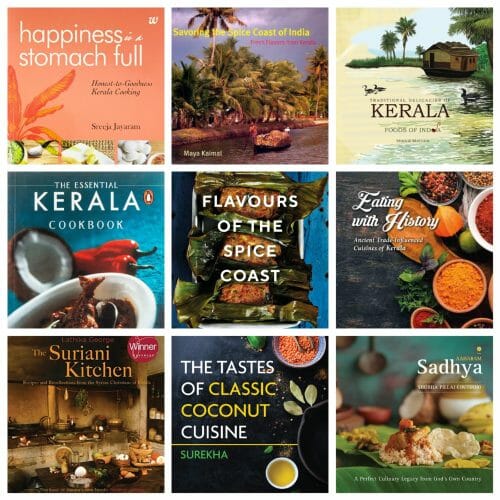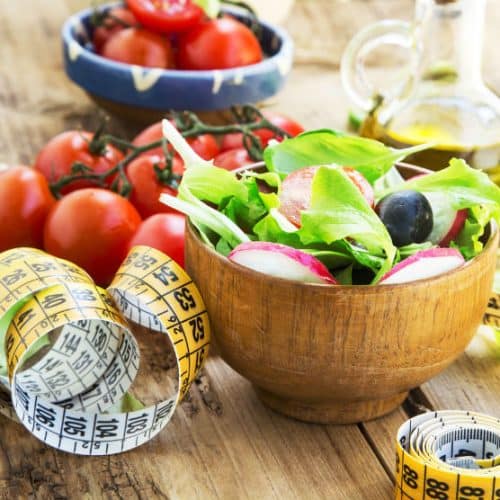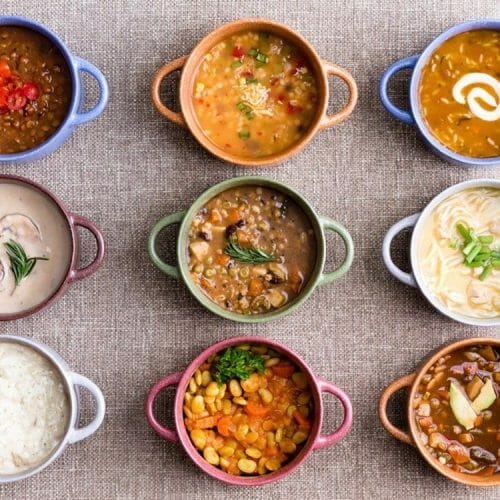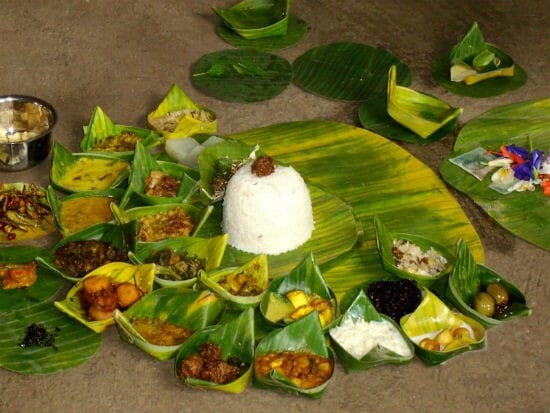Parathas, Indian bread packed with an array of mouth-watering fillings, have been a constant delight on tables across the subcontinent. From the traditional wheat fields of Punjab to the bustling streets of Kolkata, parathas are enjoyed in numerous forms and flavours.
These golden-brown disks of doughy delight, stuffed with various sumptuous fillings like Paneer (Cottage Cheese), Aloo (Potatoes), Mooli (Radish), Gobi (Cauliflower), and even sweet fillings, cater to every palate in North India.
One of the most popular types of paratha is the plain flatbread, made from all-purpose or wheat flour. Whether it’s stuffed, tandoor-cooked, or pan-fried, parathas are the OG street food of India that can be enjoyed with a variety of fillings and vegetables.
The skill of properly rolling and stuffing the paratha often signifies the mastery of an Indian kitchen. Below, you’ll find a list of 13 paratha varieties that every foodie must try.
13 Easy Paratha Varieties and Recipes To Satisfy Your Taste Buds
Experiment with wheat flour for different types of parathas.
Try cheese paratha for a twist on the classic Indian bread. Gobhi paratha is a popular street food. Make Malabar parotta or sweet lassi to pair with your parathas. Explore fenugreek leaves and onion paratha.
Aloo Paratha
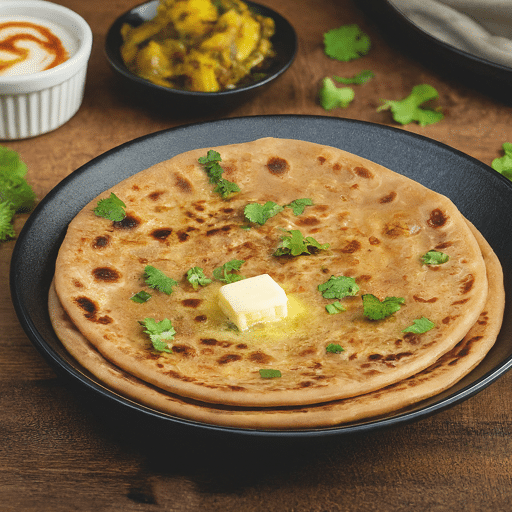
Aloo parantha variety of paratha
When talking about parathas, the first variety that often comes to our mind is the classic Aloo Paratha – a spicy, flavourful, potato-stuffed Indian bread. Be it a chilly winter morning or a rainy afternoon, a well-made Aloo Paratha can turn any ordinary meal into a delightful experience.
Preparation of Aloo Parathas involves a two-step process – first, the preparation of spicy potato filling and second, the stuffing and rolling of the paratha. The key lies in the perfect balance of spices in the potato filling, which primarily consists of mashed potatoes, finely chopped onions, green chillies, garam masala, and other aromatic spices.
Know how to prepare Aloo Paratha at home.
Lachha Paratha
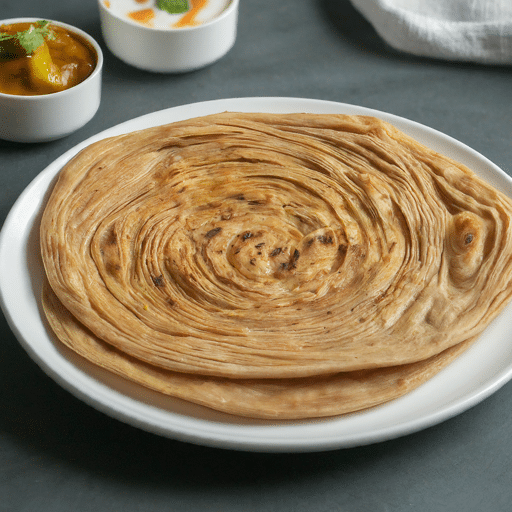
Lachha Paratha
Resembling a layered pastry, the Lachha Paratha is a multi-layered, flaky bread originating from Punjab. The term ‘lachha’ literally translates to ‘ring’ or ‘coil’ in English, indicating its distinct coiled and flaked structure reminiscent of puff pastries. It’s perfect with rich, creamy curries, enhancing the overall flavour of the dish.
The dough for Lachha Paratha is made with whole wheat flour, salt, and water.
What makes this paratha stand out is the dough rolling technique. After being rolled with a rolling pin on a wooden board called chakla, the dough is brushed with ghee or oil, then folded and rolled again. This multiple folding and rolling of paratha dough gives the paratha its characteristic layers.
Once the parathas get golden brown and crispy on a hot tawa, they are gently crushed to reveal the flaky layers. The end result is a deliciously buttery paratha that’s crispy on the outside with soft, layered insides.
Gobi (Cauliflower) Paratha
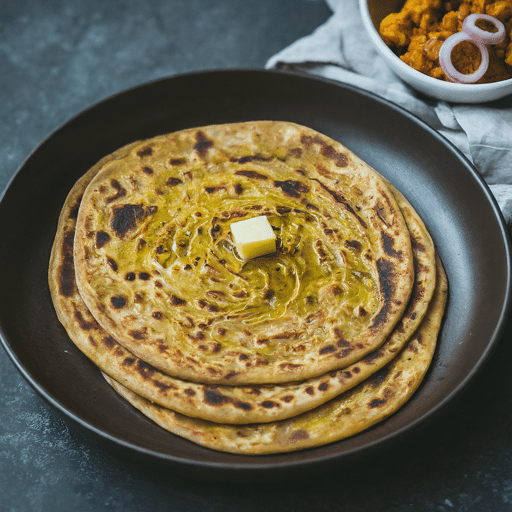
cauliflower paratha
Gobi Paratha, another gem from the heart of Punjab, is a delightful treat for cauliflower lovers. With grated cauliflower as the primary ingredient, Gobi Paratha offers a unique texture and distinct flavour compared to other parathas.
The filling is made with grated cauliflower, finely chopped green chillies, coriander leaves, and several Indian spices. It is crucial that the grated cauliflower is devoid of any moisture as it could make rolling out parathas difficult.
Paneer Paratha
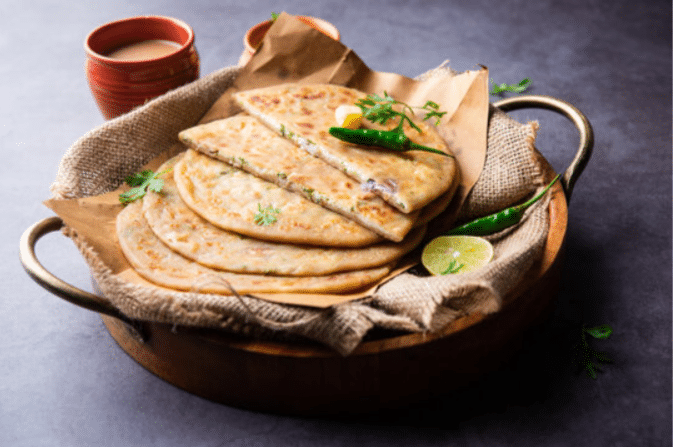
Paneer paratha
Next in line is the delicious Paneer Paratha – the perfect way to incorporate some protein-packed dairy into your meal. Made with a stuffing of crumbled paneer (cottage cheese) and an assortment of spices, these soft and tangy parathas are a fantastic addition to any meal.
The paneer filling is relatively easy to prepare. It involves mixing crumbled fresh paneer with chopped onions, green chilli, cumin powder, and garam masala. Some even like to add finely chopped coriander or mint leaves for an added layer of freshness.
The stuffed paneer parathas are then rolled out and cooked on a hot tawa with ghee or oil until crispy and golden brown on both sides. The end result is a flaky, crispy outer layer with soft paneer filling on the inside.
Know how to make stuffed Paneer Paratha at home.
Pyaz Paratha
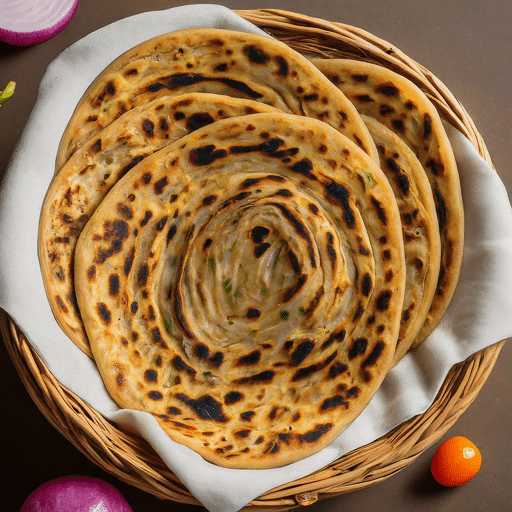
Onion pyaz paratha
For those who love the pungent flavour of onions, the Pyaz Paratha is a real treat! Filled with a spicy onion mixture, this paratha is quite different compared to other stuffed parathas. The distinct crunch and sharp taste of the onions lend an exciting bite to the paratha.
Preparation and cooking require some skills, as the moisture from the onions can make the dough sticky, rendering it slightly tricky to roll.
Nonetheless, with a bit of practice and patience, one can create the perfect Pyaz Paratha, where the flavours of onion and spices blend perfectly.
Mooli Paratha
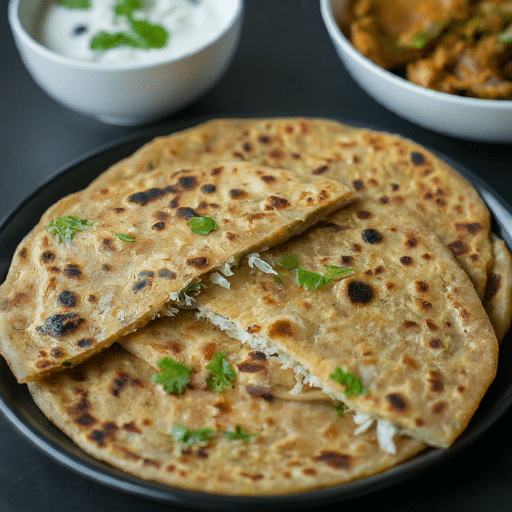
Mooli paratha
Mooli Paratha, a staple in Punjabi households, is yet another tasty variant of the several India offers. Mooli, also known as Radish in English, lends a distinct peppery flavour to the paratha. Grated radish mixed with an array of warming spices makes for an incredible stuffing.
The key technique in preparing the stuffing lies in grating the radish and squeezing out the water content from it. This juice can be used to knead the dough, enhancing the radish flavour in the paratha. The grated radish is then mixed with green chillies, coriander leaves, and various spices like garam masala, red chilli powder, etc.
The parathas are finally rolled, stuffed, and pan-fried till golden brown on both sides. Like most parathas, the Mooli Paratha is also cooked in ghee, imparting a rich, buttery flavour to the paratha.
Also Read: How to make Mooli Paratha at home
Meetha Paratha
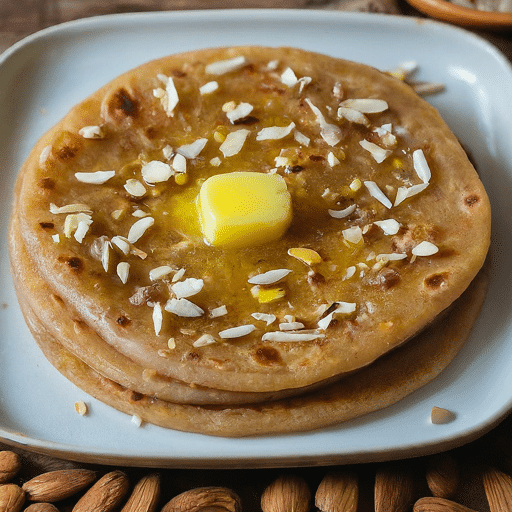
Meetha sugar paratha
While most parathas are savoury, we have Meetha Paratha, which caters to your sweet tooth. It stands apart with its sweet and aromatic stuffing made from sugar, ghee, and cardamom powder. The sweetness of the sugar and the aroma of cardamom create a magical flavour profile.
This paratha has a beautiful texture of crunchy sugar granules that melt in your mouth, leaving behind a lingering sweet cardamom aftertaste. Typically enjoyed as a dessert or a sweet breakfast in some households, it is a simple recipe that can be put together in minutes.
Pudina Paratha
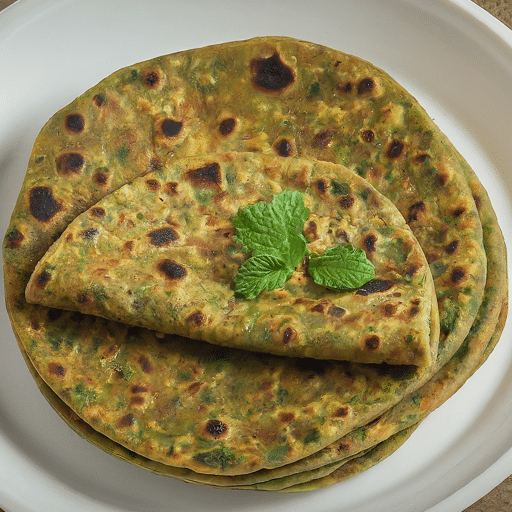
Pudina paratha
Pudina Paratha brings forward the exceptional flavours of mint leaves (Pudina). The parathas are made with a dough enriched with fresh mint leaves, creating a refreshing flavour profile.
The cooked Pudina Paratha emanates a wonderful aroma that’s enticing. It is crispy on the outside, soft on the inside, and filled with the refreshing taste of mint. Accompanied by curd or any spicy side dish, Pudina Paratha provides a culinary experience that is flavourful and enjoyable.
Read our complete recipe to prepare Pudina paratha at home.
Mughlai paratha
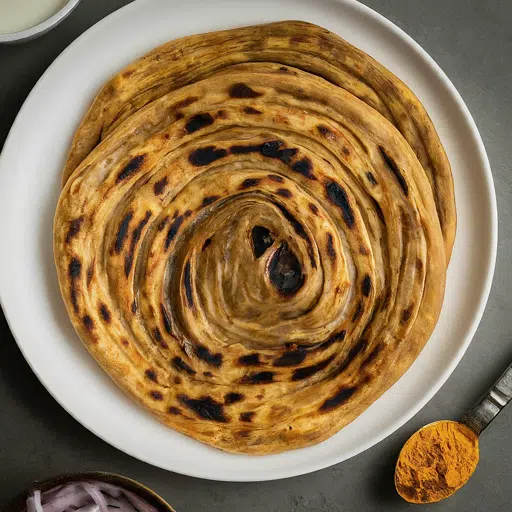
Mughlai paratha
A treat from the royal kitchens of the Mughal empire, Mughlai Paratha is a rich, filling bread that can be enjoyed as a meal on its own. Unlike the other parathas, the Mughlai Paratha has a different preparation method.
Instead of stuffing, the flavourful filling is folded into the dough in a square envelope fashion. This filling usually consists of minced meat or paneer, chopped onions, green chillies, pepper, and various aromatic spices. The decadence of the Mughlai Paratha makes it perfect for special occasions or when you are in the mood to indulge.
Read how to make Mughlai Paratha at home.
Banana Paratha
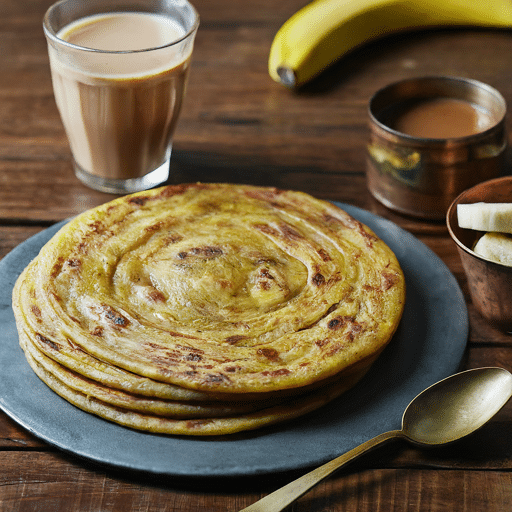
Banana paratha
Banana Paratha is a delightful twist to the regular parathas. A favourite amongst children, Banana Paratha combines the healthy goodness of bananas with the hearty wholesomeness of parathas.
The parathas carry a sweet and aromatic filling of ripe bananas, offering a unique taste experience. Perfect for breakfast or as a snack, it’s an excellent way to incorporate bananas into your diet. Plus, they require minimal ingredients and are quick to prepare. Simple, delicious, and packed with the sweetness of bananas, this paratha will undoubtedly leave you craving for more!
Chocolate Paratha
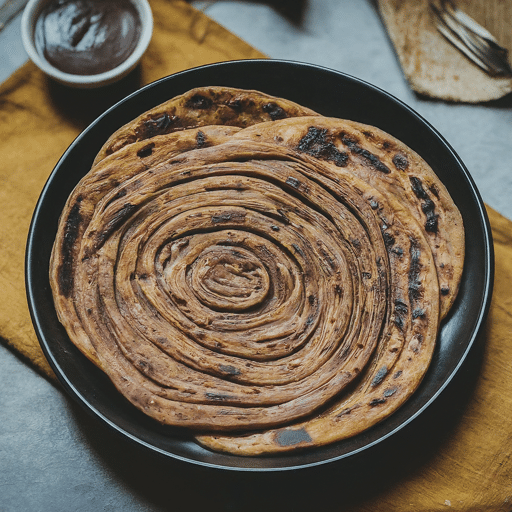
Chocolate paratha
For chocolate lovers, Chocolate Paratha is a must-try! Imagine biting into a flaky paratha and then tasting the oozing, melted chocolate.
This paratha is a perfect dish to treat your sweet tooth and an innovative dessert that will be loved by adults and kids alike.
The preparation is straightforward – the chocolate is grated or chopped and mixed with sugar or butter to create a sweet, gooey filling. This filling is then stuffed inside the whole wheat flour dough, rolled out, and cooked on a hot tawa until crispy and lightly browned on both sides.
While cooking, the chocolate inside melts, creating a soft, gooey centre that is simply irresistible. Be it for breakfast with a cup of milk, a snack, or dessert after a hearty meal, the Chocolate Paratha undoubtedly steals the show.
Methi Paratha
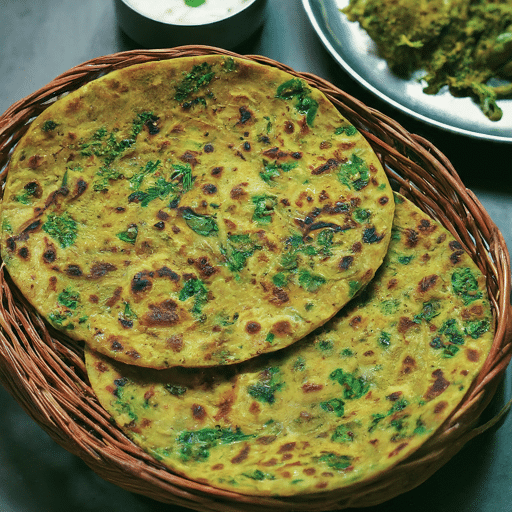
Methi paratha
Flavourful and nutritious, the Methi Paratha contains the essence of fresh fenugreek leaves, which infuse an exciting flavour into the dough. Known for their numerous health benefits, fenugreek (methi) leaves make the paratha a wholesome food choice without compromising on the taste.
The preparation involves using either finely chopped methi leaves or methi leaves puree for the dough, along with spices like cumin seeds, chilli powder, and garam masala. The dough is then rolled into parathas and cooked on a tawa until golden brown on both sides.
The bitterness of methi leaves combined with the warm, fragrant spices results in an aromatic and flavoursome paratha. Methi Paratha is usually savoured with pickles, curd, or any curry.
Malabar parotta
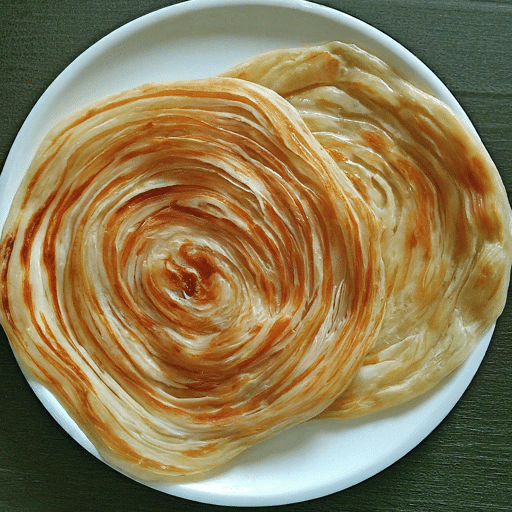
Malabar parotta
Taking you to the heart of South India, Malabar Parotta is a rich, flaky, sumptuous bread that originated in Kerala.
Unlike regular parathas, Malabar Parottas are made from all-purpose flour and involve a unique method of preparation, which results in their distinctive layered structure and taste. Malabar Parottas pair perfectly with spicy coconut-based curries, particularly in Kerala cuisine.
Conclusion
Parathas, the iconic Indian bread, hold a special place in both our meals and hearts. Stuffed with a variety of ingredients or simply flavoured with spices, they cater to every taste bud. From regular favourites like Aloo Paratha and Paneer Paratha to exciting twists like Chocolate Paratha and Banana Paratha, there’s an endless list of parathas to explore.
With each state and region of India offering its unique spin on the traditional paratha, the grandeur of Indian cuisine comes alive through them. Whether sweet or savoury, every paratha has a story to tell, a flavour to relish, and a joy to share.
Frequently Asked Questions
Which type of paratha is the healthiest?
Methi Paratha and Dal Paratha are considered among the healthiest due to their high protein and vitamin content. Using whole wheat flour instead of all-purpose flour and stuffing with nutrient-rich ingredients like spinach, lentils, and other vegetables makes the paratha healthier.
What is the best substitute for the wheat flour used in paratha recipes?
The best substitutes for wheat flour are multi-grain flour, chickpea flour (besan), or millet flour like bajra or jowar. These flours are gluten-free, high in fibre and protein, which makes them a healthier alternative to wheat flour.
Which are some traditional North Indian side dishes to be served with parathas?
Traditional North Indian side dishes for parathas include pickles, yoghurt, or raita, tadka dal, or rich curries like Chole and Paneer Butter Masala. Some prefer simple accompaniments like butter or jaggery, particularly with stuffed parathas.
Are parathas vegan-friendly?
Parathas can be made vegan-friendly by using plant-based oils instead of ghee or butter while cooking. The stuffing also needs to be vegan, opting for vegetable and legume-based mixtures over dairy products like paneer.
Can parathas be frozen and stored?
Yes, parathas can be semi-cooked and then frozen. They need to be thoroughly cooled before storing in freezer-safe bags or containers. When required, simply reheat on a tawa with some butter or oil till they are fully cooked.
Can Parathas be eaten with raita?
Yes, parathas can be enjoyed with raita. The cool and refreshing flavours of raita complement the warm and hearty nature of parathas, creating a delicious balance in every bite. Be it plain raita or varieties like cucumber or mixed vegetable raita, the combination adds a delightful twist to your meal experience.








